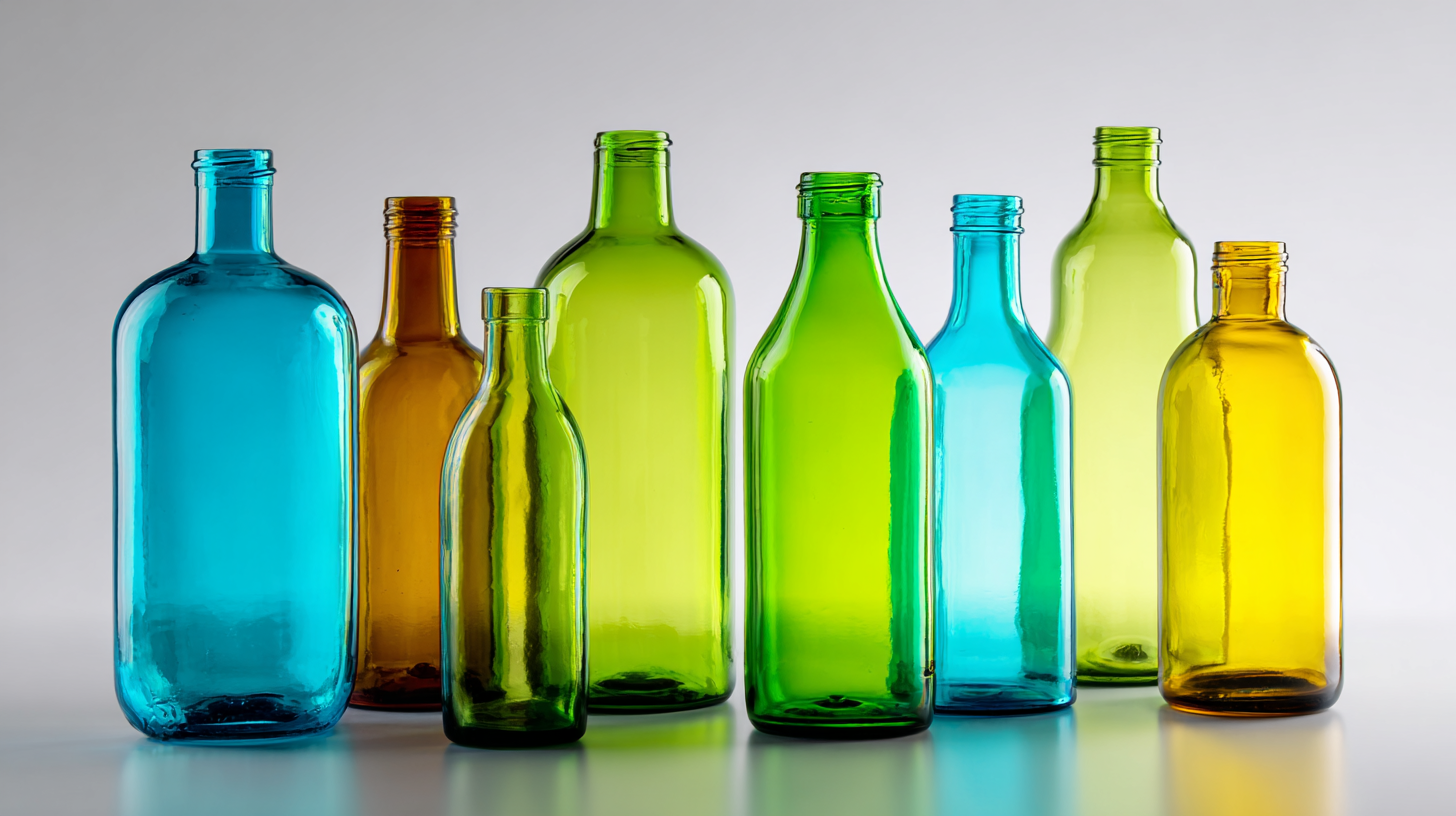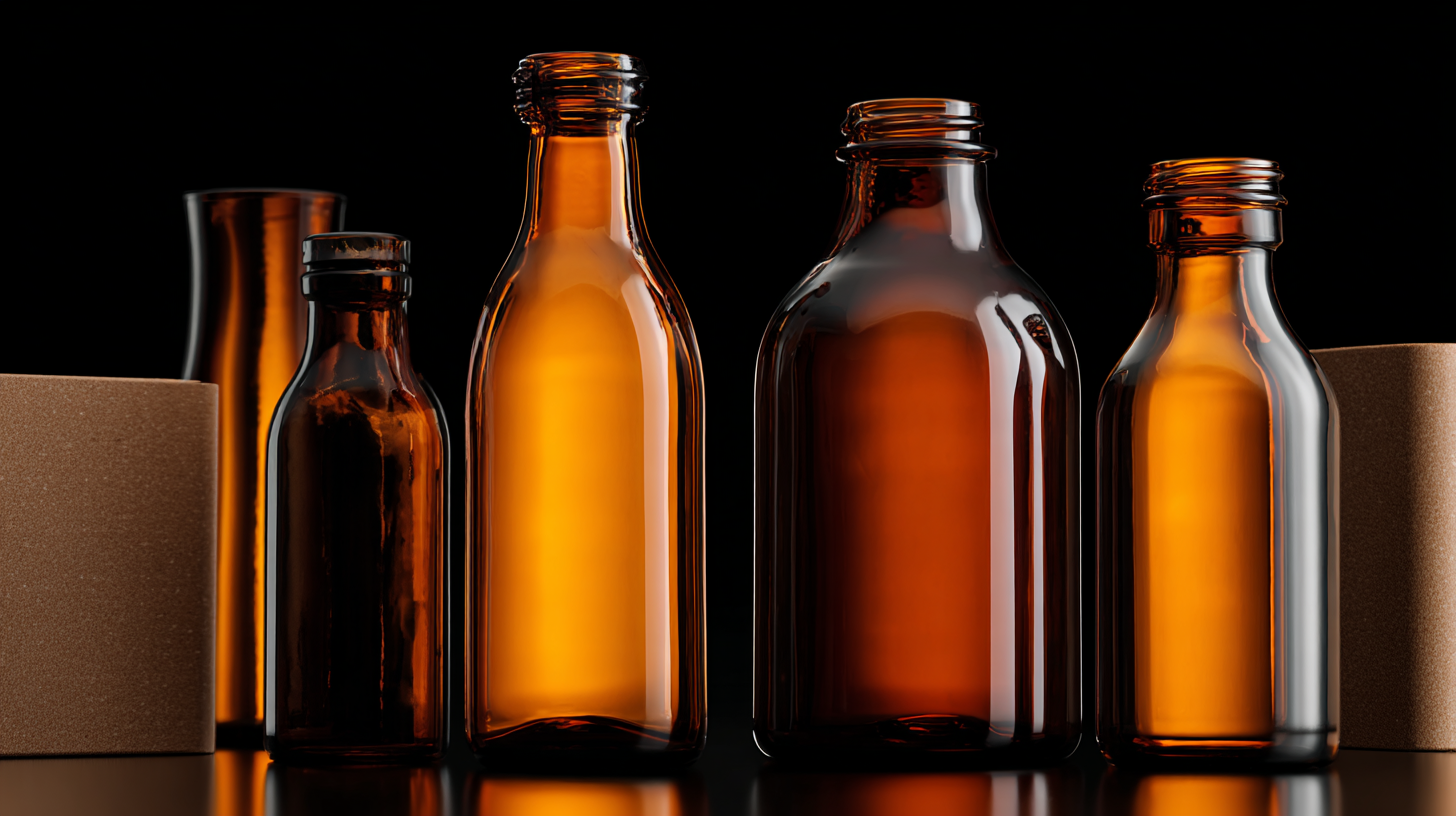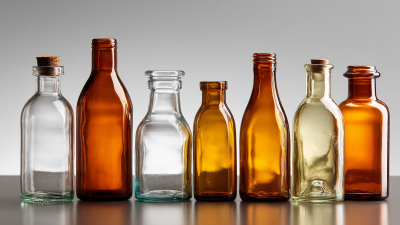
The Ultimate Guide to Sustainable Packaging Solutions for Glass Bottles
Sustainable packaging has become an essential consideration for brands aiming to reduce their environmental footprint, particularly in the beverage industry where packaging for glass bottles plays a significant role. According to a report by Smithers Pira, the global market for sustainable packaging is projected to reach $500 billion by 2027, driven by increasing consumer demand for eco-friendly alternatives.

Glass bottles, renowned for their recyclability and premium aesthetic, present a unique opportunity for brands to embrace circular economy principles. By implementing innovative packaging solutions that minimize waste and enhance recyclability, companies not only align with consumer values but also comply with stringent regulations that many countries are adopting. This guide explores the latest trends and tips in sustainable packaging for glass bottles, empowering brands to make informed decisions that contribute to a greener future.
Innovative Materials for Eco-Friendly Glass Bottle Packaging
Innovative materials for eco-friendly glass bottle packaging are essential as the demand for sustainable alternatives grows. According to a report by the World Economic Forum, consumers are increasingly prioritizing sustainability, with 66% willing to pay more for products from environmentally responsible companies. This shift is driving innovation in packaging solutions that not only preserve the integrity of glass bottles but also minimize environmental impact.
Biodegradable options such as plant-based materials and recycled paper are gaining traction in the industry. For example, eco-friendly labels made from sugarcane waste and recycled PET are emerging as popular choices that reduce waste while maintaining brand visibility. Additionally, companies like Pela are pioneering the use of compostable materials for bottle wraps, demonstrating that sustainable practices can be both functional and attractive. A recent study from Smithers Pira highlights that the sustainable packaging market is set to reach $1 trillion by 2024, reflecting the urgent need for brands to adopt innovative, eco-friendly packaging solutions to meet consumer expectations.
Designing Reusable Packaging Solutions for Glass Bottles
When designing reusable packaging solutions for glass bottles, the primary goal is sustainability without sacrificing functionality. One effective approach is to create modular packaging systems that can be tailored to various bottle sizes and shapes. This flexibility not only extends the lifespan of each bottle but also minimizes waste by allowing consumers to reuse the same packaging for different products. Incorporating durable materials for these systems ensures that they withstand repeated use, promoting a circular economy where design meets practicality.
Another key aspect is the integration of user-friendly features that encourage consumers to participate in the reuse cycle. For instance, incorporating easy-to-open closures, stackable designs, or even clear labeling can enhance the overall user experience. Additionally, partnering with local businesses to facilitate bottle return programs can create a community-driven approach to sustainability. By providing incentives and convenient return points, the acceptance and usage of reusable packaging can be significantly increased, contributing to a more sustainable future for glass bottled products.
The Ultimate Guide to Sustainable Packaging Solutions for Glass Bottles
This chart illustrates the sustainability impact of various packaging solutions for glass bottles, rated on a scale from 1 to 10. The data highlights the advantages of using recycled and reusable glass materials, while also emphasizing the importance of minimizing packaging overall.
The Role of Biodegradable Fillers in Sustainable Bottle Packaging
The growing awareness of environmental issues has prompted the packaging industry to explore sustainable solutions, particularly in the context of glass bottles. One innovative approach is the incorporation of biodegradable fillers in packaging designs. These fillers not only enhance the performance of glass bottles but also reduce the environmental footprint associated with traditional packaging materials.

Biodegradable fillers, often made from natural substances such as cornstarch or plant fibers, serve a dual purpose. First, they protect the glass bottles during transportation and handling, minimizing the risk of breakage. Second, they offer a sustainable alternative that decomposes over time, unlike conventional plastic fillers that contribute to landfill waste. By utilizing these biodegradable options, manufacturers can create packaging that aligns with eco-friendly practices while meeting market demands for both safety and sustainability.
As more companies adopt biodegradable fillers for glass bottle packaging, it signals a shift toward a more sustainable future. This transition not only showcases a commitment to environmental stewardship but also appeals to increasingly eco-conscious consumers. The integration of these materials into the packaging process marks a significant step in redefining how products are packaged, paving the way for broader adoption of sustainable practices across various industries.
Case Studies: Successful Sustainable Glass Bottle Brands
Case studies of successful sustainable glass bottle brands reveal innovative practices that contribute to environmental preservation while maintaining brand integrity. Brands like Voss and Ecover have embraced eco-friendly materials and practices, showcasing how sustainability can enhance their market presence.

Another example is Ecover's use of plant-based inks and sustainable sourcing for their glass packaging. By focusing on a transparent supply chain and investing in renewable energy for production, Ecover not only minimizes its carbon footprint but also communicates its values to its customers. These case studies illustrate that integrating sustainable practices into packaging strategies not only benefits the environment but can also drive consumer loyalty and brand differentiation in a competitive market.
Future Trends in Sustainable Packaging for Glass Products
The demand for sustainable packaging solutions in the cosmetics industry is rapidly evolving, driven by shifting consumer preferences and environmental considerations. Recent trends indicate that over 70% of cosmetic brands are now adopting environmentally friendly packaging options, aligning with the increasing consumer demand for sustainability. While plastic remains a dominant material in the industry, there is significant progress towards incorporating sustainable alternatives, particularly for glass products. This transition not only reflects a commitment to reducing environmental impact but also taps into the rising consumer interest in eco-conscious brands.
By 2025, the global sustainable packaging market is projected to exceed $373.8 billion, with an impressive compound annual growth rate of over 8.5%. This remarkable growth trajectory is fueled by the industry's focus on innovative and eco-friendly packaging solutions that resonate with consumers. For glass packaging specifically, the emphasis on sustainability is evident, with many brands exploring biodegradable materials and minimalist designs that reduce waste. As the beauty sector continues to embrace this "packaging upgrade" trend, it is clear that sustainable practices are not just a passing fad but a fundamental shift towards a more responsible future in product packaging.
Related Posts
-

How to Choose the Right Packaging for Glass Bottles for Maximum Protection and Appeal
-

Choosing the Right Packaging for Glass Bottles: A Complete Guide for Eco-Friendly Solutions
-

Unlocking Quality: Essential Supplier Sourcing Tactics for Best Plastic Bottle Containers
-

How to Select the Best Toothpaste Tubes for Your Brand's Packaging Needs
-

Discover the Latest Trends in Tube Cosmetics for Effortless Beauty On-the-Go
-

Mastering the Art of Tube Cosmetics Application for Flawless Skin






